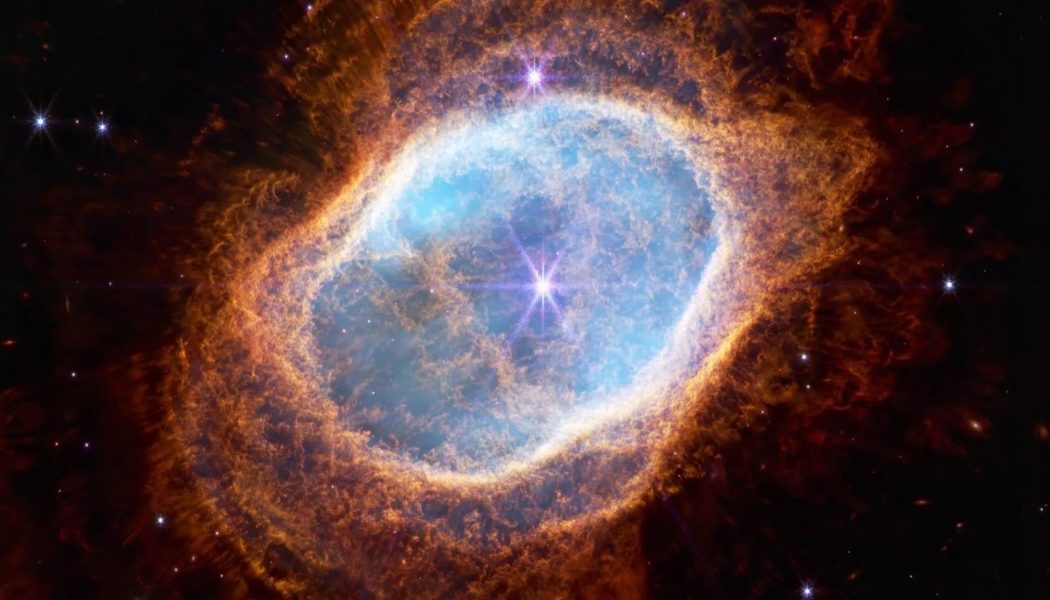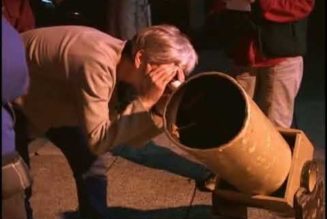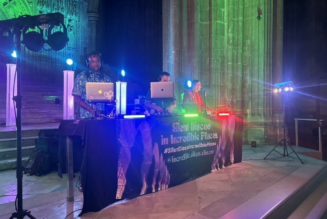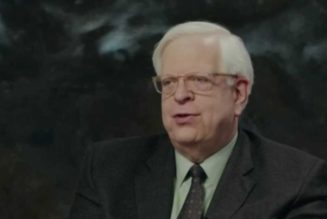
The five spectacular images that have just been released by NASA’s new James Webb Space Telescope tell a story about the universe and reveal new, never before seen details that promise many more to come in the future.
They also tell a story about human beings and God.
On Christmas, 2021, a fragile cylinder of metal shot from the edge of an equatorial jungle and began to thread its way through the atmospheric gases of a terrestrial planet in the Sol system. As the cylinder broke free of the last lonely molecules of air tenuously held by the ever weakening gravity, it suddenly blossomed like a flower, revealing an even smaller, intricately folded device of gold and silver gossamer.
The planet, of course, is Earth, and the device is NASA’s new telescope.
The James Webb Telescope was not supposed to launch on Christmas morning, 2021. In fact, the initial plans had a target launch date in 2007. Building a space telescope is hard, though, not least because the designs usually involve the use of cutting edge technology at scales never before attempted. Another reason for the delays was caution on the part of the astronomical community: unlike the Hubble Space Telescope, which skims the outermost layers of the atmosphere only 350 miles above the Earth’s surface, the Webb Telescope would be a true space telescope, with an eventual resting place 930,000 miles from Earth. Thus, no repair missions would be possible.
Colors in Space
Moreover, unlike Hubble, which is designed to look at the heavens at more or less the same colors of light we can see with our eyes, the new NASA telescope was optimized to look at infrared light, which we can’t see without special cameras but which we experience as heat.
Infrared light coming from space is very difficult to see from the surface of the Earth, because much of it is absorbed by the gases in our atmosphere. Astronomers can, and do, try to get around this by putting infrared telescopes on the tops of mountains, and thus above much of the atmosphere, or even on large planes, but the best way to see the faint infrared glow of distant celestial objects is to go to a very cold place far outside of the atmosphere, which is exactly the kind of place scientists sent the James Webb Space Telescope.
Just like we can think of visible light as consisting of different colors — red, orange, yellow, green, blue, indigo, and violet — so to do astronomers divide the colors of infrared light into three main groups. If you imagine the rainbow, with red at the bottom, and imagine what lies directly below the bottom red band, that’s what scientists call the near infrared, because its near the colors that we can see with our eyes. Even below that is a part of infrared light called the mid infrared. The near- and mid-infrared are the colors that the James Webb Telescope sees with its four “eyes”, the Near InfraRed Camera (NIRcam), the Near InfraRed Spectrograph (NIRspec), the Near Infrared Imager and Slitless Spectrograph (NIRISS), and finally, the Mid-InfraRed Instrument (MIRI).
Part of the time since Christmas morning 2021 was spent in carefully turning on each of these instruments and ensuring that they were fully operational. The images released this week show that, much to the relief of me and astronomers worldwide, they indeed are.
Specks in the Cosmos?
When confronted with such awe-inspiring cosmic vistas, an overwhelming feeling of smallness is natural: after all, aren’t we mere fleeting specks on a small rock around one star in a sea of countless stars?
Such sentiments are echoed in Psalm 8, “When I see the heavens, the work of your fingers, the moon and the stars which you arranged, what is man that you should keep him in mind, the son of man that you should care for him?” And yet, in spite of our physical smallness when compared with the vastness of the universe, we are far from insignificant worms.
As the Psalm goes on to describe, “Yet you have made him little lower than the angels; with glory and honor you have crowned him, gave him power over the works of your hands: you put all things under his feet.”
Yes, we are small creatures in an unfathomably vast cosmos, but as the royal imagery suggests, our importance in God’s eyes is not at all in proportion to our size. In fact, the recent images from the James Webb telescope reinforce just how special we are, since out of all the planets orbiting all the stars in all the galaxies, life, as far as we currently know, exists only here on Earth. Similarly, as far as we know, we are the only rational creatures in this universe with the capacity to look up in awe at the night sky and contemplate its Maker.
The then Cardinal Ratzinger (later Pope Benedict XVI) commented on this sense of smallness in his Introduction to Christianity, where he writes, “[W]e think, in an age when we know how infinitely different things are, how unimportant the earth is in the vast universe and consequently how unimportant that little speck of dust, man, is in comparison with the dimensions of the cosmos — in an age like this it seems an absurd idea that this supreme being should concern himself with man, his pitiful little world, his cares, his sins, and his non-sins.”
However, he goes on to note that “although we may think that in this way we are speaking about God in an appropriately divine manner, in reality we are in fact thinking of him in a very petty and only too human way, as if he had to e selective so as not to miss the overview. We thereby imagine him as a consciousness like ours, which has limits, must somewhere or other call a halt, and can never embrace the whole.”
That’s a mistake, he says. In reality, “to him who as spirit upholds and encompasses the universe, a spirit, a man’s heart with its ability to love, is greater than all the milky ways in the universe. Quantitative criteria become irrelevant; other orders of magnitude become visible, according to which the infinitely small is the truly embracing and truly great.”
Moreover, this small planet Earth is itself special, since in spite of the vastness of the universe, of the countless planets around countless stars in countless galaxies, it is on this particular planet, around this particular star, in this particular galaxy that the Author of this magnificent universe, who transcends space and time, miraculously and out of His boundless love, stepped into that creation to be born.
He did that on another Christmas day, two millennia before that fragile metal cylinder emerged from the edge of an equatorial jungle to thread its way through the sky, carrying its precious gold and silver gossamer cargo that would give us such an unprecedented view of the magnificence of the heavens.
The author, an astronomer at Benedictine College in Atchison, Kansas,
will be a part of a team of scientists who are among the first to use
NASA’s new James Webb Space telescope.
Read more: “Benedictine Astronomer Explains Significance of New Space Telescope Images.”
Image: Southern Ring Nebula, NASA.
Join Our Telegram Group : Salvation & Prosperity









